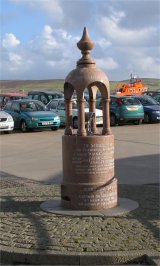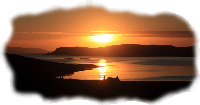
On 8th May 1866, the Hull Whaler 'Diana' left Lerwick, onboard was a crew of 50, more than half of them were Shetlanders and she headed for the Davis Straits in the west of Greenland, then north to Baffin Bay.
Her captain was John Gravill who had been given command of the Diana in 1857, when she was newly fitted with an auxiliary steam engine, the first Hull whaler to get one. He was an experienced whaler, as well as a respected captain, having worked his way up from the bottom. During that same year, while seal hunting, Captain Gravill was able to rescue his son John, who was master of the forty three year old, Sarah and Elizabeth when she became trapped and was crushed by ice, but the men managed to walk the eight miles across dangerously soft and rotten ice to where the Diana was dodging off the edge of the pack ice.
When the Diana left Lerwick in '66 little did the whalers know their voyage would last eleven months and that six of them would be spent trapped in the Arctic ice. The Diana had been carrying provisions for only two months and by the time she limped into Ronas Voe on April 2, 1867 Captain Gravill and seven others had died. The local folk realised something was very wrong when only two of the men were able to go aloft. Quickly water and food was taken out to the ship and they administered all the help they could, but alas three more died that same day and yet another three were to perish before she was sailed to Lerwick.
In total thirteen men died, of which nine were Shetlanders. The ships surgeon, Dr Charles Smith kept a written journal of the entire trip and this can be seen at the Hull Museum. Dr Smith's brother, Frederick Smith was mayor of West Ham and after hearing the tragic story of the Diana's crew, he paid for a red marble drinking fountain to be erected on Victoria Pier in Lerwick.The memorial reads "The Providential Return of the Whaler 'Diana' of Hull 1866-7"
A model kayak was donated to the Lerwick museum by Captain Gravill's grand-niece, it had belonged to her grand-uncle and it shows the very fine workmanship of the Greenlanders. An assortment of souvenirs, from both the Arctic and Antarctic were taken home by whalers over the years, including some excellent examples of scrimshaw work, this was a special art, learned by some whalers, who carved and decorated baleen, whalebone and sperm teeth.

